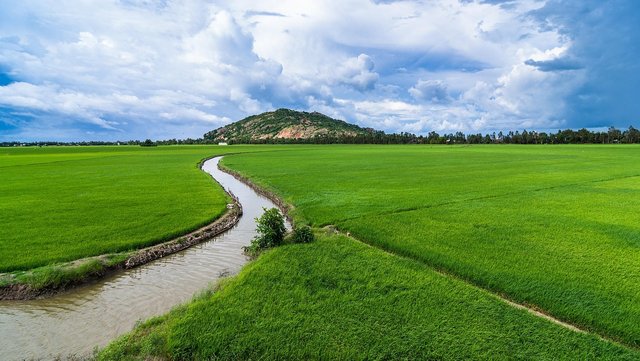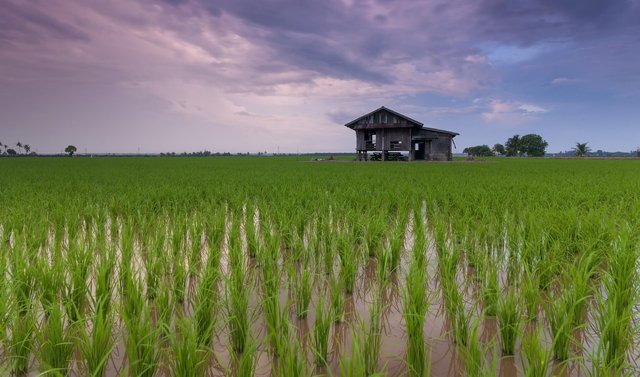Basic Knowledge in Agriculture #48
An irrigation system the procedure or practice of providing water to land used for agricultural purposes
Water is essential for nutrient absorption and plant growth.
Types of Irrigation Systems
Reference irrigation methods can be of a variety of types depending also on land conditions, water availability and technology adopted:
Surface Irrigation
This type of system is the oldest and most commonly found. Open ditches or canals convey water to the land. One of them is flood application in rice paddies. It’s simple and cheap, but is wasted if it isn’t done correctly.
Drip Irrigation
Water is applied directly to the plant root zone through pipes with small-diameter holes (emitters). The system is very efficacious; the water is discharged exactly. It is commonly applied on plantations or a value agronomic crops.
Drip Irrigation
Water is sprayed into the air and falls as simulated rain through pipes and nozzles. It is applicable to large regions with varied topography. However, as water efficiency is very good, the installation cost is higher than surface irrigation.
Subsurface Irrigation
Liquids are run through pym pipes into the soil around the roots. This system uses very little water and minimizes evaporation, but it is more technology intensive and cost prohibitive.
The value of innovative irrigation systems in agriculture
Irrigation is one of the essential devices in enhanced productivity of agriculture. To begin, irrigation provides water when needed all season long – which is not possible with rainfall. This enhances the prospect of avoiding crop failure caused by drought. Secondly, irrigation permits agricultural intensification or the cultivation of crops more than once a year. For instance, rice grown on technically irrigated paddy fields is cultivated 2-3 times a year.
In addition, the irrigation system is also related to the efficiency of using fertilizer and pesticide, because after applying these in field, water plays direct role spreading them. Advanced irrigation methods, like drip and sprinkler systems, conserve 50–70% more water compared to conventional watering methods. This is of particular concern in water scarce regions.


https://x.com/zulbahr1/status/1968156272664121399?t=m_u_NLuFOfkkkgg8SlEq-Q&s=19
Hola amigo
Existen varios tipos de riego, todos importantes para los cultivos, porque mantiene las plantas hidratada
El agua es el líquido indispensable para todo ser vivo. Incluso para las plantas y en esta era moderna se ha implementados varios tipos de riego que minimizan la perdida de agua .
Manteniendo la tierra húmeda j la planta hidratada